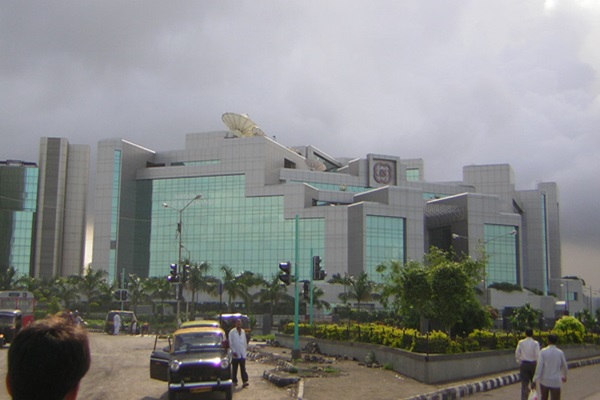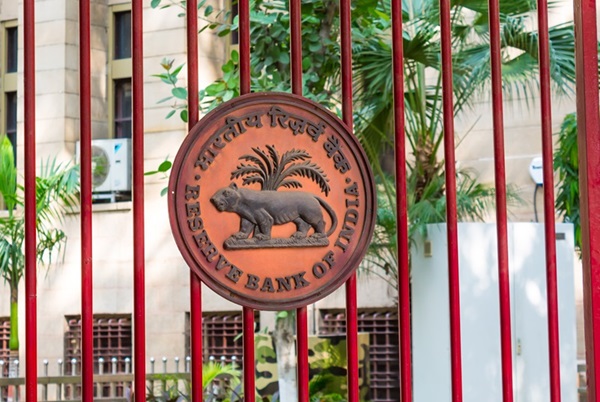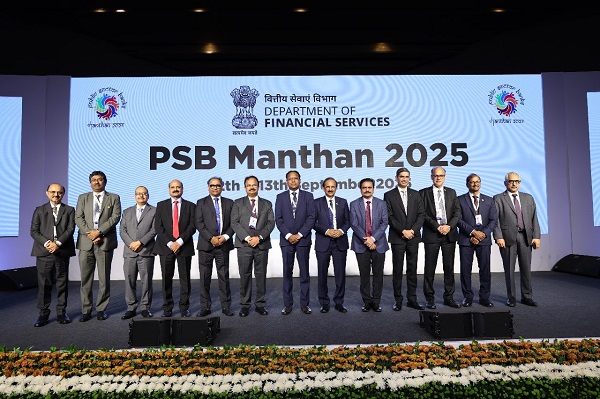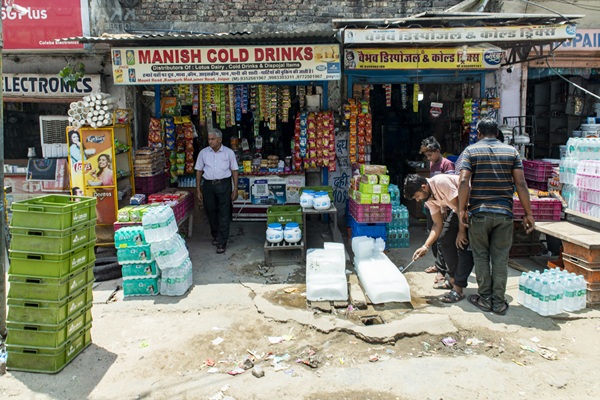.png)
The Invisible Frontline: Cyber Wars And India’s Digital Destiny
With cyberattacks now striking our financial, military, and governance networks at record levels, the new frontier of national security is no longer just on land, sea, or air—it’s as much in cyberspace.


By Lt Gen Syed Ata Hasnain (Retd)
Lt Gen Syed Ata Hasnain is a former Commander of India’s Kashmir Corps and Chancellor of the Central University of Kashmir.
October 17, 2025 at 10:53 AM IST
The revelation that the National Stock Exchange faces nearly 170 million cyberattacks every single day, and that during Operation Sindoor over 400 million attempts were made in just 24 hours on digital systems in India, should leave no room for doubt that India is now at the centre of a vast, invisible battlefield. Wars of the modern era no longer begin with the thunder of tanks or the roar of aircraft; they unfold silently, across cables, clouds and code.
The cyber warrior has become as vital as the soldier on the front line because in a digitised nation, a breach in cyberspace can cripple the financial arteries, paralyse infrastructure and erode public confidence long before a single shot is fired. Many years ago, I used to imagine the state of the Western world in an environment where I carried no cash while living in London; the digital cards got me everywhere, including purchase of provisions, fuel, paying energy bills or transportation. Today India is far beyond that state; we are networked as a society and internet penetration is continuing. Convenient as things are, so are the threats to our safety and security.
Cyberattacks today have moved far beyond the realm of petty crime. They are no longer about one hacker seeking quick profit but about organised groups, criminal syndicates, and increasingly, state-sponsored adversaries testing the limits of India’s digital resilience. The motives vary. Some chase money, others seek chaos, but all share the intent to undermine the credibility of a country that has become a global symbol of digital innovation.
India’s spectacular rise as the world’s software hub, the pioneer of Unified Payments Interface, and the builder of one of the most advanced digital public infrastructures has not only transformed the economy but also drawn the attention of those who would prefer to see that success falter. To disrupt India’s UPI systems, digital payment networks, or fintech gateways is to strike at the very foundation of its growth story. It is a way to slow the country’s momentum and cast doubt on its capacity to secure the systems that now underpin its global reputation. Not too many nations can boast of the kind of systems established in India.
The rise of what experts term “skinware” attacks has added a troubling human layer to this threat. These are not simply lines of code but well-organised operations of impersonation and deception, where cybercriminals exploit trust and ignorance to commit fraud. Cases of so-called “digital arrests,” fake loan offers, and identity thefts are spreading across the country. Ironically, many such operations are traced to the very cities that power India’s legitimate digital revolution —Bangalore, Hyderabad, and Chennai, where hundreds of small online systems are constantly probed or infiltrated to create footholds for criminal networks. For adversary nations and terrorist groups, damaging these systems or eroding India’s credibility in the global digital marketplace is a cost-effective form of sabotage.
The anatomy of the threat reveals layers that stretch far beyond conventional understanding. At one end lie the financially motivated attacks on banks, stock exchanges, and payment systems, where a single disruption could freeze transactions and cause cascading panic across markets. At another lies the targeting of critical infrastructure—the power grids, airports, water networks, and railways that keep the nation running. The most insidious, however, are the operations aimed at manipulating information, spreading false narratives, or quietly exfiltrating sensitive data from defence and research networks. Each attack chips away at trust, and in cyberspace, trust is the ultimate currency.
In the world of disaster management, the increasing use of sensors for early warning spells another domain where the adversaries would be unhappy to see India’s marching progress. The Sachet app provides all information on impending disaster threats and the Common Alerting Protocol will soon be riding the technology of cell broadcast.
India’s vulnerability is a direct result of its digital success and the sheer scale of its connectivity. With over 900 million internet users, more than a billion mobile connections, and one of the fastest-growing digital economies in the world, the attack surface is immense. The country’s rapid digitisation has outpaced the ability of systems to build layered defences, especially across smaller institutions and state-level agencies. Many utilities and service providers still operate on legacy systems that were never designed to withstand sophisticated, multi-vector cyber assaults. Even in the private sector, the awareness gap is stark; many organisations view cybersecurity as an IT cost rather than as an existential safeguard. Meanwhile, the shortage of trained specialists remains severe—industry estimates suggest India may need 1.5 million more cybersecurity professionals within the next few years. Add to this the dependence on imported hardware and open-source software, and the vulnerabilities multiply.
Artificial Intelligence now sits at the centre of this digital equation, amplifying both opportunity and risk. AI systems can analyse massive data flows, detect anomalies and automate responses faster than human analysts ever could, but they also enable attackers to scale up their efforts dramatically. Malicious actors can now use AI to identify weak spots, generate convincing phishing attempts, and even craft deepfake messages that mimic official communications. More dangerously, the very data on which AI depends can be corrupted or “poisoned,” leading to false outcomes that could cripple critical systems or distort decisions. In a future increasingly reliant on AI-driven governance, finance, and defence, the integrity of data will decide the credibility of decisions. A single breach can not only manipulate information but also undermine faith in AI solutions themselves—a crisis of confidence that would ripple through every digital layer of society. Data manipulation will be a live threat faster than we can imagine.
Recognising the scale of this challenge, India has begun to treat cyberspace as a domain of national security in its own right. The government’s ongoing work on a National Cyber Security Strategy marks a significant step toward institutionalising resilience and accountability. Agencies such as CERT-IN and the National Critical Information Infrastructure Protection Centre now play crucial roles in early warning, real-time monitoring, and incident response. Within the defence establishment, the creation of the Defence Cyber Agency under the Integrated Defence Staff has introduced a structured approach to military cyber operations, while the Digital Personal Data Protection Act seeks to protect citizens’ data privacy and reduce vulnerabilities. The financial sector, too, has started investing heavily in dedicated Security Operations Centres and intelligence-sharing mechanisms that allow faster response to emerging threats.
Yet resilience is never static. As the nation moves deeper into an interconnected era of 5G, cloud computing, and smart infrastructure, the challenge will not be simply to defend but to anticipate. India’s future cybersecurity strategy would rest on integration—linking civil, military, and private sectors into a unified network of defence. Cyber drills must become routine across ministries and corporations alike. Public-private fusion will be key, as no single entity can guard the entire digital frontier alone. Equally important will be investment in human capital, building a cadre of cyber professionals who are trained, incentivised, and recognised as vital assets of national security.
Ultimately, this is a war of credibility as much as technology. Each cyber breach tests public confidence in governance and each successful defence reinforces the belief that India’s rise is sustainable. As digital transactions, e-governance, and AI-driven services become the scaffolding of everyday life, securing them becomes a matter of national survival. The frontline now also passes through data centres and control rooms, not just border posts. The wars of tomorrow may not always be declared; they will simply be detected and ‘No War No Peace’ could transform into ‘For Ever at War’.
India must therefore invest not only in high-quality firewalls but also in a culture of vigilance and cyber hygiene that pervades every level of society. The same innovation that propelled the nation to global leadership in software must now be harnessed to build an unbreakable cyber shield. In an age when code is mightier than the cannon, India’s greatest victory will be to ensure that its digital sovereignty remains inviolable—and that the trust the world places in its systems continues to stand firm.
As a post script, it’s the veteran population of the nation which will need to be protected and secured from cyber frauds. The generation now classified as veterans does not have the technical backdrop to cope with this on its own. Societal support for this will therefore be a must.



